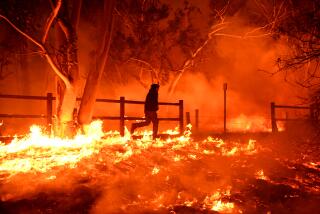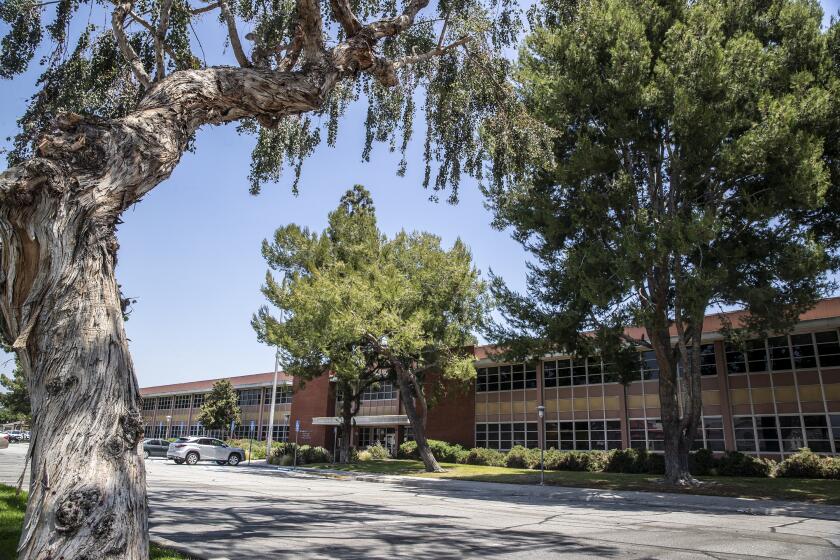Southern California Edison equipment may have caused Hurst fire in Sylmar, report says

- Share via
Southern California Edison reported to state regulators Thursday that its equipment likely sparked the Hurst fire that burned nearly 800 acres in Sylmar last month, but the utility has yet to determine where the much more destructive Eaton fire ignited.
The Los Angeles Fire Department tracked the source of the Hurst fire in Sylmar to an area near a Southern California Edison transmission tower where downed lines were found, the utility company announced in its latest filing with the California Public Utilities Commission. The fire damaged two homes but there have been no reports of injuries.
“The Los Angeles Fire Department is investigating the fire and has suggested SCE’s equipment caused the Hurst fire,” Paul Pimentel of SCE said in the company’s filing with the state utility regulator. “Absent additional evidence, SCE believes its equipment may be associated with the ignition of the Hurst fire.”
The Hurst fire ignited shortly after 10 p.m. on Jan. 7 during a Santa Ana windstorm and several hours after the Palisades and Eaton fires first started. The Sylmar blaze was fully contained on Jan. 16 and originated in an area north of Saddle Ridge Road near the transmission tower.
In a separate filing on Thursday, SCE reported that the utility has not determined where the Eaton fire ignited, but is exploring all information and data, including videos from the area in the early stages of the fire.
“While we do not yet know what caused the Eaton wildfire, SCE is exploring every possibility in its investigation, including the possibility that SCE’s equipment was involved,” Pedro J. Pizarro, president and chief executive of SCE’s parent company, Edison International, said in a statement. “We have been fully engaged since the start of the fires in supporting the broader emergency response, containment, recovery and investigation efforts.”
SCE reported that four power lines over Eaton Canyon saw a brief increase of electrical current around the time the fire started, the utility company announced in a separate filing.
The utility has notified the California Public Utilities Commission that it had received a number of notices, from attorneys representing insurance companies, to preserve evidence regarding the Eaton fire.
Near the ignition point of the Hurst fire, the utility company reported that “hardware supporting the insulator string for the top phase bundled conductors separated and caused the top phase to fall on the middle phase resulting in both falling to the ground at the base of Tower 6.”
Edison has since repaired the damaged equipment and is holding on to the material as part of the investigation.
While SCE announced its findings to the utilities commission, the investigation into both the Eaton and Hurst fires remain ongoing.
The full investigation into the Eaton fire could take several months to complete, SCE said, and will include an up-close inspection and testing of its equipment.
More to Read
Sign up for Essential California
The most important California stories and recommendations in your inbox every morning.
You may occasionally receive promotional content from the Los Angeles Times.












